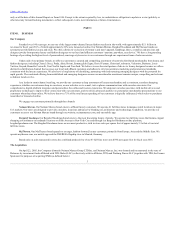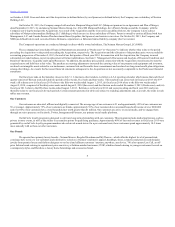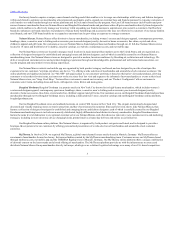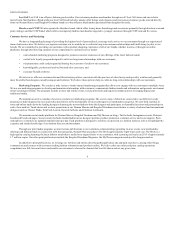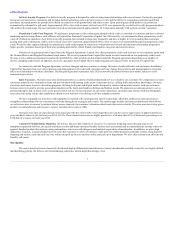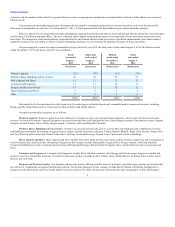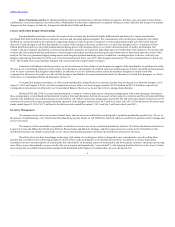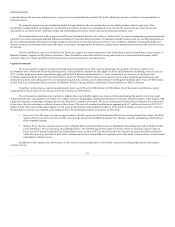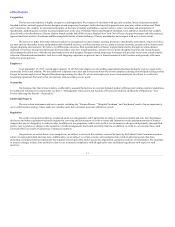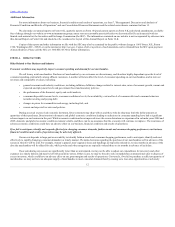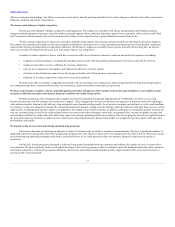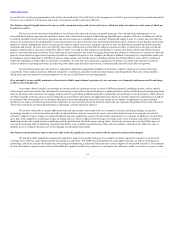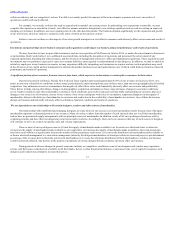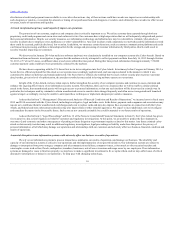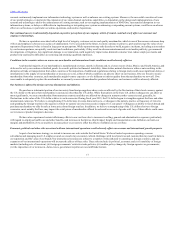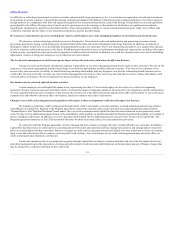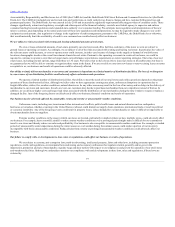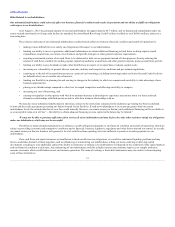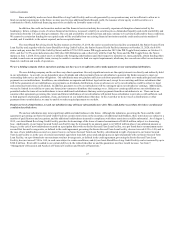Neiman Marcus 2014 Annual Report Download - page 14
Download and view the complete annual report
Please find page 14 of the 2014 Neiman Marcus annual report below. You can navigate through the pages in the report by either clicking on the pages listed below, or by using the keyword search tool below to find specific information within the annual report.
Table of Contents
affect our customer relationships. Any failure on our part to anticipate, identify and respond effectively to these changes could adversely affect our business,
financial condition and results of operations.
The luxury retail industry is highly competitive.
The luxury retail industry is highly competitive and fragmented. We compete for customers with luxury and premium multi-branded retailers,
designer-owned proprietary boutiques, specialty retailers, national apparel chains, individual specialty apparel stores, pure-play online retailers and "flash
sale" businesses, which primarily sell out-of-season products. Many of our competitors have greater financial resources than we do.
We face strong competition to attract new customers, maintain relationships with existing customers and obtain merchandise from key designers.
We compete for customers principally on the basis of quality and fashion, customer service, value, assortment and presentation of merchandise, marketing
and customer loyalty programs and store and online ambiance. Our failure to compete successfully based on these and other factors may have an adverse
effect on our results of operations and cause us to lose market share to our competitors.
A number of other competitive factors could have an adverse effect on our business, financial condition and results of operations, including:
• competitive pricing strategies, including discounting of prices and/or the discounting or elimination of revenues collected for services;
• expansion of product or service offerings by existing competitors;
• entry by new competitors into markets and channels in which we currently operate;
• alteration of the distribution channels used by designers for the sale of their goods to consumers; and
• adoption by existing competitors of innovative retail sales methods.
We may not be able to continue competing successfully with our existing or new competitors, and prolonged periods of deep discount pricing by
our competitors may have a material adverse effect on our business, financial condition and results of operations.
We focus on providing a seamless, cohesive and high-quality experience through our omni‑channel retail model, and our failure to successfully execute
our plans could adversely affect our business, financial condition and results of operations.
With the expansion of the integrated omni‑channel retail model, including through the implementation of NMG One, we believe our overall
business has become and will continue to become more complex. These changes have forced us to develop new expertise in response to the new challenges,
risks and uncertainties inherent in the delivery of an integrated omni‑channel retailing model. As we execute our plans and continue to evolve and transform
our strategy, we may not adequately manage the related organizational changes to align with our strategy, make investments at the right time or pace or in the
right manner, or appropriately monitor, report or communicate the changes in an effective manner. In addition, although we continually analyze trends in the
way our customers shop, as well as the relationships between our stores and online offerings to maximize incremental sales, we may not gather accurate and
relevant data or effectively utilize that data, which may impact our strategic planning and decision making. If we do not properly allocate our capital between
the store and online environment, or adapt our store operations to the integrated omni‑channel retail model, our competitive position and overall sales and
profitability could suffer.
We depend on the success of our advertising and marketing programs.
Our business depends on attracting an adequate volume of customers who are likely to purchase our merchandise. We have a significant number of
marketing initiatives and regularly fine‑tune our approach and adopt new ones. However, there can be no assurance that we will be able to effectively execute
our advertising and marketing programs in the future, and any failure to do so could adversely affect our business, financial condition and results of
operations.
Our InCircle loyalty program is designed to cultivate long‑term relationships with our customers and enhance the quality of service we provide to
our customers. We must constantly monitor and update the terms of this loyalty program so that it continues to meet the demands and needs of our customers
and remain competitive with loyalty programs offered by other luxury and premium multi‑branded retailers. Approximately 40% of our total revenues in
fiscal year 2015 were generated
13


